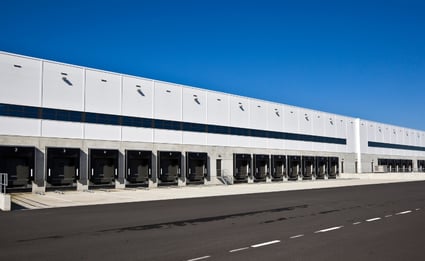The Importance of Mitigating Supply Chain Risk
Nick Ostdick - August 29, 2017

It’s a big concept both in terms of importance and how many elements of global supply chain management under which it encompasses. We’re talking about risk and the factors manufacturing companies must address and combat to ensure stability and reduce the amount of uncertainty in a globally-competitive, variant-rich landscape. No matter how diligently planners and managers work to curtail this uncertainty, risk in a variety of forms can plague companies across the entire value chain, everything from planning and procurement to production and transport logistics.
All this being said, there are a number of strategies, solutions, and principles manufacturing companies can deploy and integrate to reduce the level of risk in a cross-organizational manner that also helps to increase productivity and enhance efficiencies.
In an effort to also foster greater levels of agility, transparency, and end-to-end (E2E) visibility across various channels including sales and operations (S&OP), inventory optimization, demand capacity planning, production programs, and transportation management, planners and managers must understand and realize the importance of managing and mitigating risk, especially to reduce the likelihood of disruptions or breakdowns.
With this in mind, let’s examine the importance of risk management in global supply chain management and how companies can reduce this risk through leveraging a handful of critical principles and concepts.
Embracing Industry 4.0
If we think of Industry 4.0 as the evolution of the ‘smart factory,’ then it makes sense how the Internet of Things (IOT) and its reliance on the communication between machines and systems is a core driver in helping companies break down communication and functional silos to increase efficiency and productivity. This means the flow of information about inventory levels, facility capacity, or transportation routes is more consistent and allows for greater segments of the value chain to anticipate potential breakdowns or bottlenecks. The ability of systems and solutions to work in conjunction with each other not only fosters greater productivity and accuracy, but it also provides greater visibility into a company’s overall supply situation.
In addition, embracing Industry 4.0 helps to reduce the risk of disruptions or breakdowns through the optimization of production programs and processes in maintaining high levels of productivity and efficiency. Through the acceptance and deployment of advanced analytics, planners and managers have the power to leverage data-driven insights to make informed decisions about planning strategies and planned production programs. Industry 4.0 uses advanced analytics to support the push for greater end-to-end (E2E) visibility and increased supply chain agility, both of which are key in avoiding bottlenecks and creating stability across the entire value chain.
Deployment of advanced analytics
We discussed before in recent entries how advanced analytics is a key driver in leveraging end-to-end (E2E) visibility and insight into a manufacturer’s overall supply situation. Applying advanced analytics to a demand planning strategy - in conjunction with other intelligent planning solutions like BOM management, Plan for Every Part, and Every Part Every Interval - allows planners and managers to optimize their planning platforms to ensure continuous production devoid of bottlenecks or breakdowns. In addition, while some decisions in today’s integrated supply chain still rely on human intervention, more and more decisions can be completed more accurately and with more efficiency via an automation platform. For example, the need to manage inventory levels and replenish certain component parts or manage the movement of containers in a yard are prime candidates for automation through the application of advanced analytics. Also, job allocation, management of raw materials or resources, and job scheduling on the production floor are contexts in which advanced analytics gives planners more power and control over production programs.
Utilizing what-if/simulation scenarios
What-if scenarios are beneficial in both mid- and long-term planning and allow planners to game out disruptive simulations that would be too costly or infeasible to enact in real-life manufacturing environments. While integrated solutions such as sequencing, order-slotting, balancing are crucial in fielding efficient production in the moment, what-if scenarios allow planners to test the limits of a certain production facility based on determined parameters to understand how well said facility can handle orders, modifications, and changes to production rules or definitions. In addition, what-if scenarios provide planners and managers with the ability to optimize and leverage increased efficiency with inventory. What-if scenarios provide planners a window into current part coverage and what steps should be taken in order to ensure continual production should the flow of materials and resources cease for an extended period of time. Planners and managers can also decide whether to increase inventory or yard holdings or leverage modified sourcing or freight strategies to guarantee enough coverage to withstand a large-scale disruption.
Understanding and realizing S&OE
For planners and managers, supply chain agility is a top concern when evaluating overall supply chain management. Micro-agility, or the ability to respond to sudden disruptions on a daily basis, has recently emerged as a pressing issue in leveraging effective, lean supply chain principles. Late shipments, forecast errors, and other small-scale disruptions can be mitigated via S&OE through improved scheduling and delivery reliability, reduction in raw materials overages or shortages, or fewer instances of rescheduled or reallocated production programs to meet customer demands. In addition, because S&OE provides a window into the weekly supply chain situation, planners and managers can essentially work backwards or forwards in the demand planning process to increase visibility across the supply stream on a number of levels, be it daily, weekly, monthly, or even yearly. This structure elevates the supply chain and makes it easy for individuals across the value chain to expose weaknesses or inefficiencies at any stage of the process, which in turn makes supply chain streamlining and optimization a much easier and effective end result to achieve.
If you want to learn more, download your guide to Transformation of Manufacturing Processes.
In this Guide you will learn:
-
Emerging Challenges in the Modern Truck/Automotive Industry
-
How Can Global Companies Adapt to These New Realities
-
How Decentralized Digital Systems Power Smarter Planning Processes
-
How flexis Can Support Flexible Supply Chain Transformation
LATEST POSTS
- Understand Circular Economy in The Manufacturing Industry
- How Can Industry 4.0 IT Integration Be Achieved Smoothly?
- The Significance of Order Sequencing in Discrete Manufacturing
- How to improve your Supply Chain Management: The Power of Control Towers
- Optimizing Human Resource Scheduling in Manufacturing: A Technological Approach



